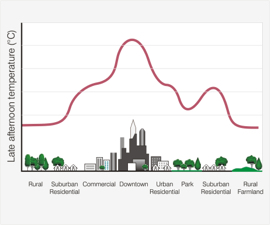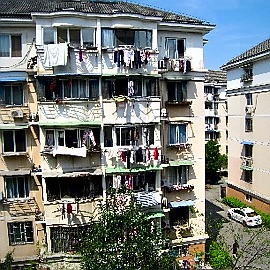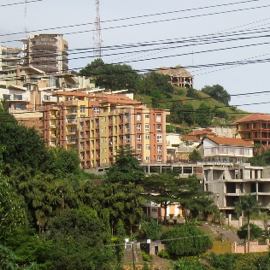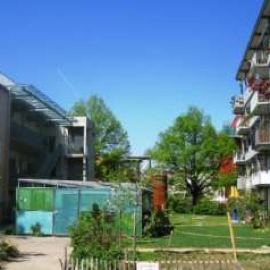Urban Scale Energy
Mitigating energy use and climate emissions is not only about individual buildings. Some of the most favourable solutions are to be found at the larger scale of housing layout and city planning. Urban scale solutions can play a major role in improving health and living environment, as well as reducing energy needs. This level demands that we link engineering and architecture with landscape design, urban planning and energy planning. We should always ask: which tasks can be better addressed at the urban scale rather than at the scale of individual buildings?
Three main approaches to reducing energy use are: improving technological efficiency, such as lighting or air conditioners; improved design, such as with passive cooling and low embodied energy materials; and addressing energy behaviour. All three can be partly solved at urban rather than individual scale:
- For space cooling, district energy systems can be much more efficient than individual,
- Urban design and layout can improve local microclimate, reducing ambient temperatures,
- City planning can reduce travel and promote energy saving and sustainable consumption.
Whilst ELITH does not address the important behavioural issues influencing energy use, we investigate urban housing types and layouts for improved microclimate and environment, as well as urban scale district cooling solutions. Keywords are: historical and current urban housing; low-dense versus high-rise; operational and embodied energy; green-blue infrastructures; sustainable city layouts.
Energy use and climate emissions are influenced by urban layout, location, structure and green space. Choice of low-dense or high-rise also impacts on embodied energy and carbon. Urban density and structure have a large influence on transport needs; and on urban heat island effects. Our research points to six main conclusions:
- Compact, low-dense housing offers sustainability (and social) advantages compared to current high-rise trends,
- The overall urban planning including green-blue infrastructure is a key to improved local microclimate, also reducing energy needs.
- In cities, the site works and infrastructures make up a large part of the energy and carbon footprint; this has been little recognised to date.
- There should be a move to urban and district scale cooling, both for higher efficiencies and especially to reduce the urban heat island effect.
- Housing should make maximum use of passive cooling design; combined with the ability to close the envelope so as to use AC in extreme periods.
- A key barrier is the lack of integration between building design, urban design and energy systems design.


 The Urban Heat Island (UHI) effect
The Urban Heat Island (UHI) effect 1990s 6-story urban housing, Ningbo, China
1990s 6-story urban housing, Ningbo, China Urbanisation, Kampala Uganda, 2016
Urbanisation, Kampala Uganda, 2016 Low-dense ecocities: Vauban, Freiburg Germany
Low-dense ecocities: Vauban, Freiburg Germany